Austin-based design agency Kartwheel Studio renovated a structure to retain the mid-century modern feel of a 1960s motor lodge on the beach in Galveston, Texas.
Originally built as the Treasure Isle Motel by Kotin & Beerman Architects in 1963, the low-rise, two-story building reopened in November 2023 as Hotel Lucine.
Kartwheel Studio and the owners worked to revitalize the 2,645-square-foot U-shaped building — the oldest mid-century waterfront motel on the city's famous pier — to maintain “as much of the original architecture as possible.” while focusing guests' attention on the inner courtyard.
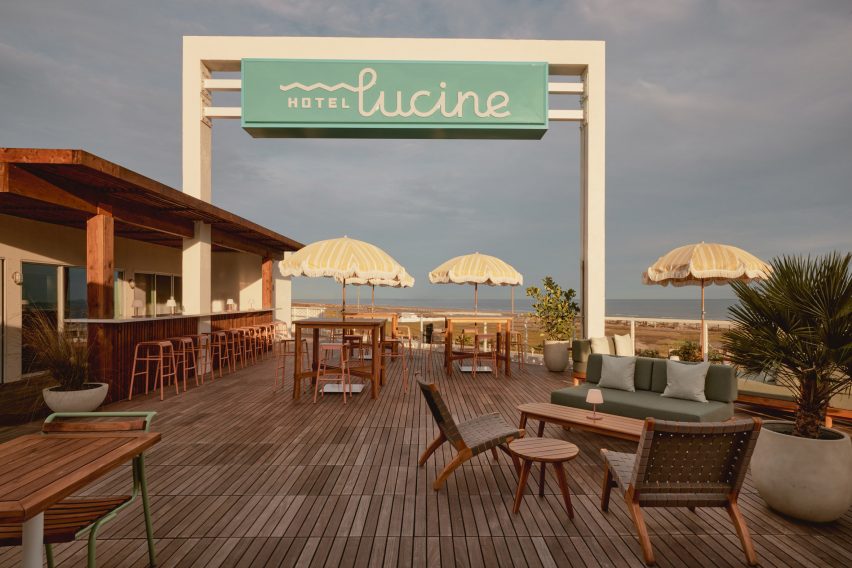
Outside, the team removed the mid-century porte-cochere and straightened the stepped facade into a sloping front wall that follows the street line.
Fresh white paint covers the stucco and brick walls, while a breeze block wall forms a short balustrade on the second floor.
Changing the appearance of the front of the house, the team opened up the ground floor with narrow strips of floor-to-ceiling windows and a large skylight that brings light into the center of the plan.
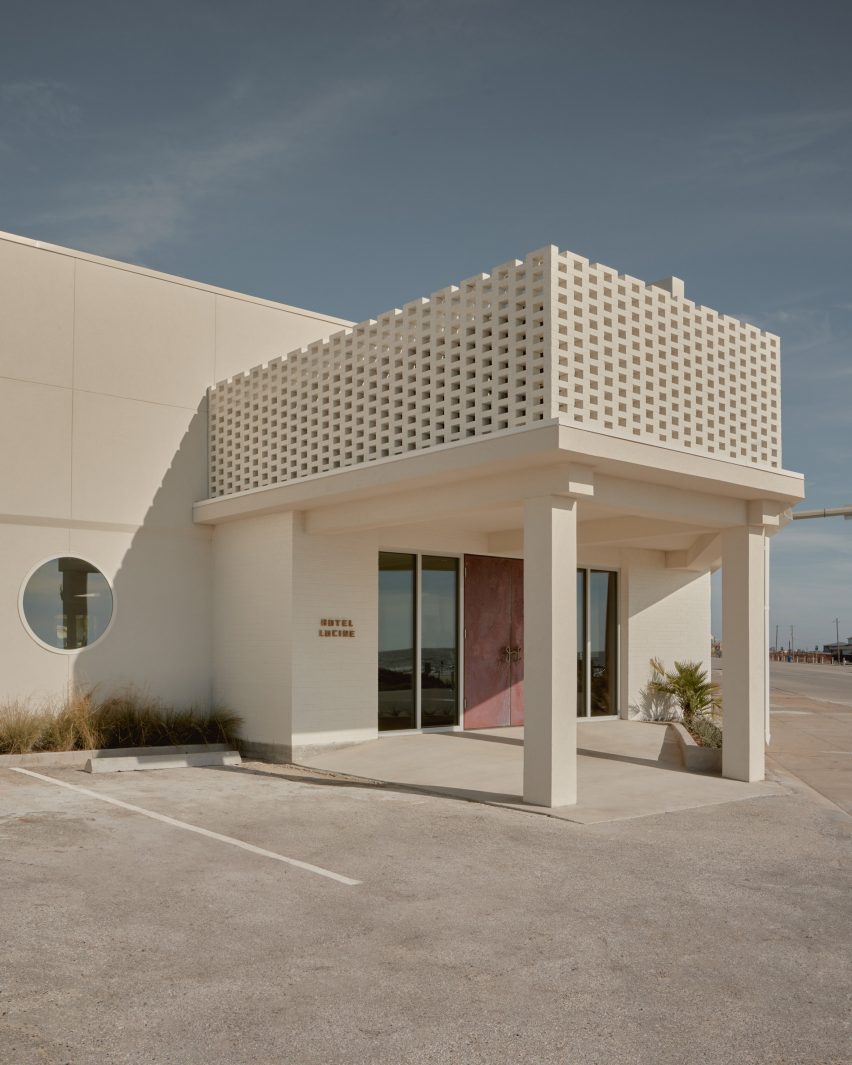
To the left of the lobby is The Den. Formerly an office complex, it is now an open lounge space with wall-to-wall sisal and mahogany, mixed textiles, bespoke furniture and three porthole windows overlooking the beach.
To the right of the lobby is a restaurant known as The Fancy.
The team removed an old spiral staircase in favor of a 56-person seating area with reed glass, a mahogany bar and natural stone.
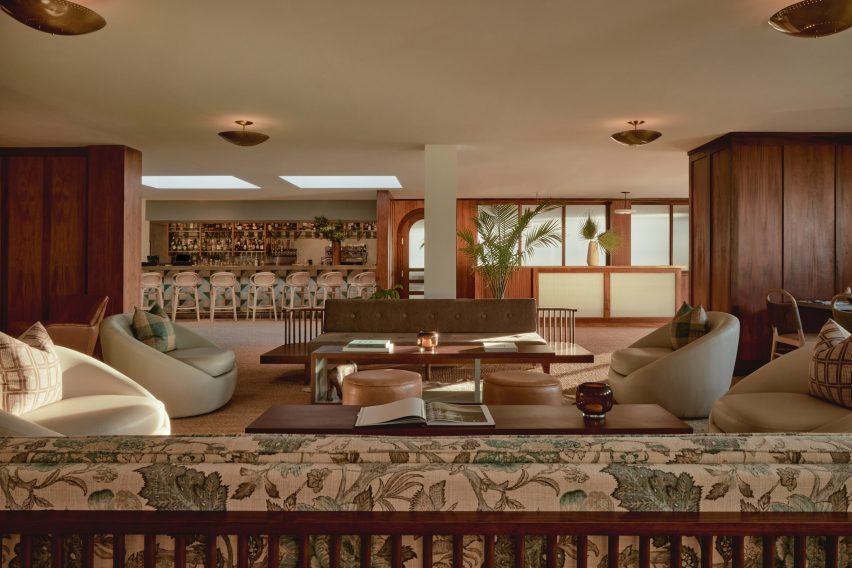
Throughout the interiors, the team placed Nicaraguan cement tile in shades of cream, teal and green – adding a dusty matte finish with a handcrafted touch.
Above the lobby is Galveston's largest rooftop bar, seating 200 people, overlooking the beach under the square-frame hotel sign.
Usable space on the roof was created when the front wall was pushed out.
The central courtyard is the focal point of the plan. Kartwheel Studio moved the old pool, pushing it to the far end of the yard.
In the resulting space, a wooden lanai creates a shaded dining area, and a movable white fence around the pool allows the deck to be extended for events.
The team kept the original folded roofline for an iconic, wave-like border around the courtyard with slats painted in a muted rainbow.
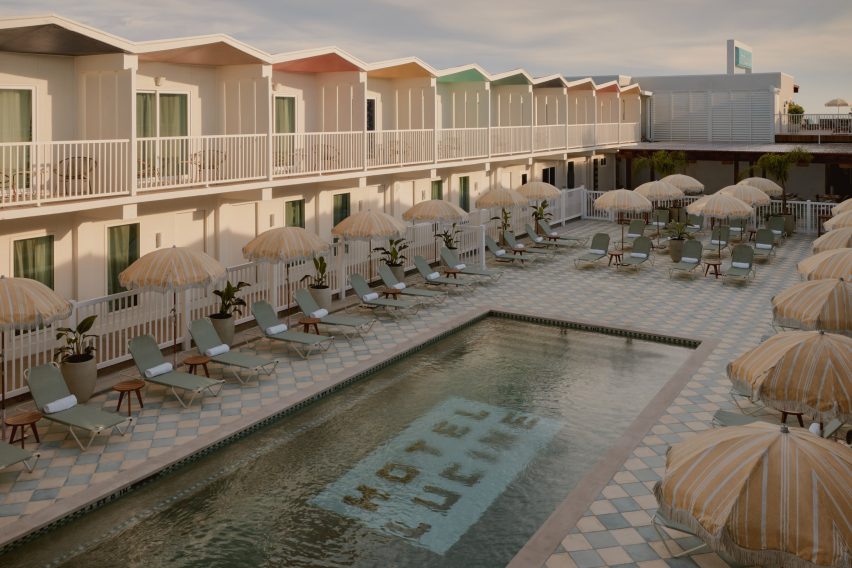
Guest rooms have been gutted – except for the antique pink, blue and cream square tiles in the bathrooms – for tranquil interiors with natural ash, upholstered leather and epoxy floors, which are lit by large courtyard-facing windows that the team restored from original design.
The exterior access points to the previous guest rooms have been closed off, moving traffic inward, but the doors are still visible on the hotel's exterior, serving as a nod to the building's history.
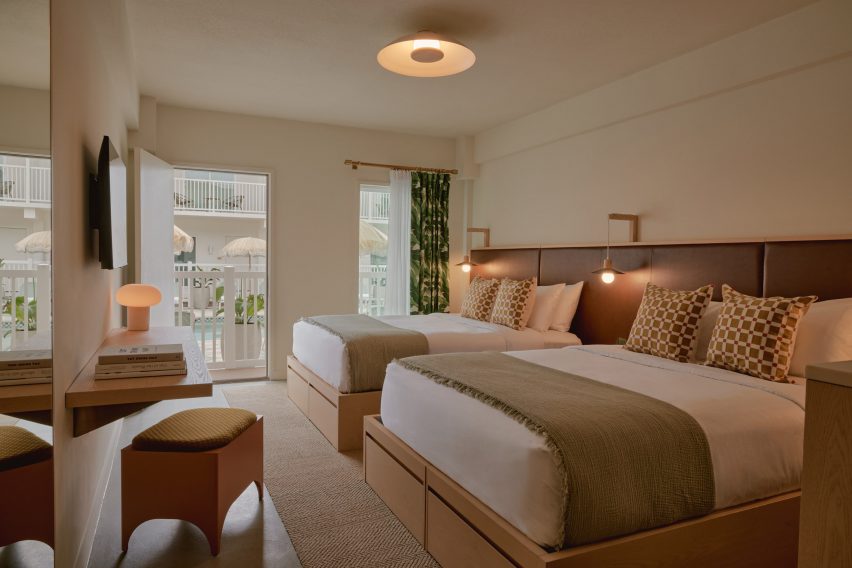
“We didn't want this to be a kitsch time capsule of a redesign,” co-owner Dave Jacoby told Dezeen.
“I wanted to celebrate [mid-century modern] a little more in a commercial space,” noting that most of the preserved and restored buildings in the city are Victorian and predate the 1900 hurricane, but that older Galveston residents would identify mid-century design as a period in their own lives.
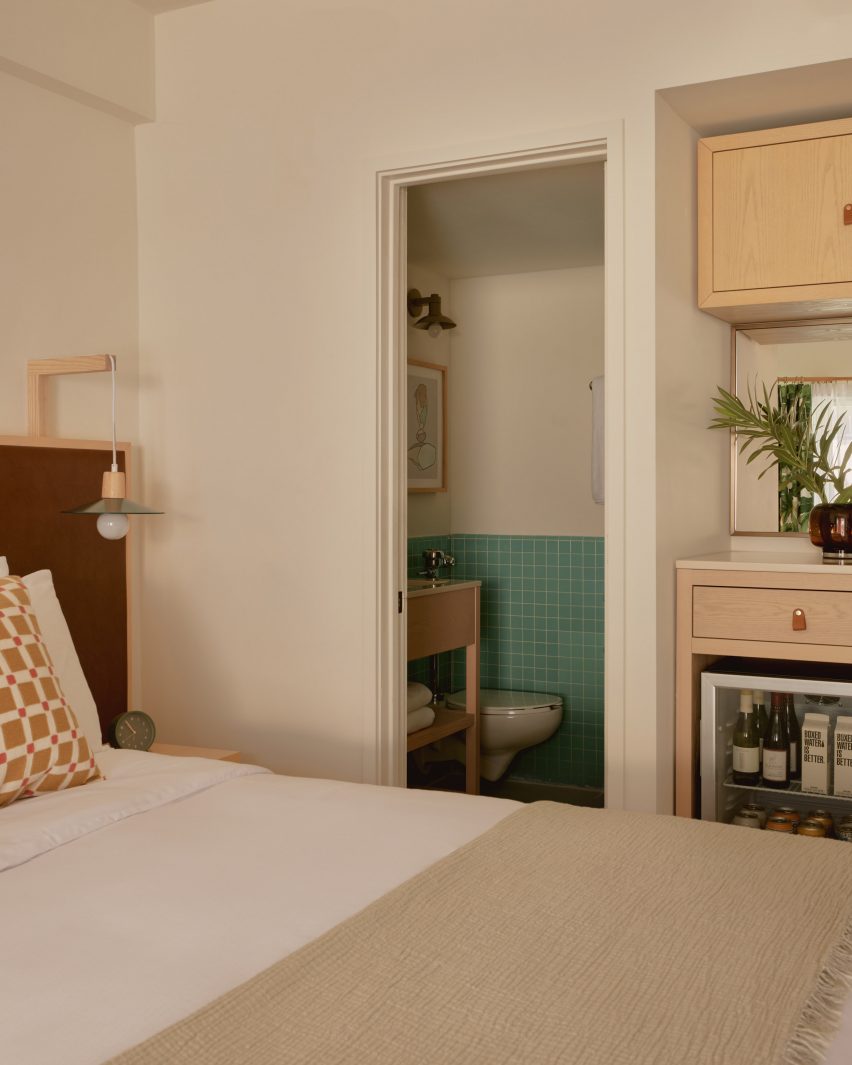
Co-owner Robert Marcus identified the area's void between mid- to high-rise franchise hotels and single-family beach house rentals and praised the freedom the team had in creating a boutique hotel that allowed younger customers to experience a moment in history. , while older patrons can revisit the Galveston they remember.
“I would love to see the renovation of the Lucine Hotel inspire other owners to honor and renew existing structures instead of tearing down a piece of history,” said Kartwheel Studio founder David Clark.
In a similar vein, Adean Studios renovated a motel on 66th Street in Flagstaff, Arizona with a nod to the area's astrological history, while Studio Tack renovated a 1950s beachfront motel on Long Island to refer to regional ferries.
The photo is by Johanna Andruchovici.
Project credits:
Architect of record: Esterwood Architects Studio
Architecture, interior architecture, interior design, industrial design, furniture and lighting Design: Kartwheel Studio
Branding: Preacher Austin

